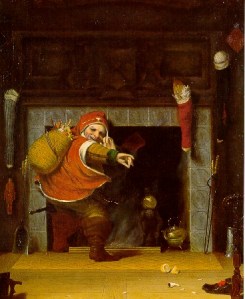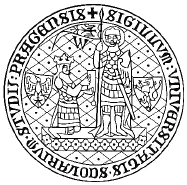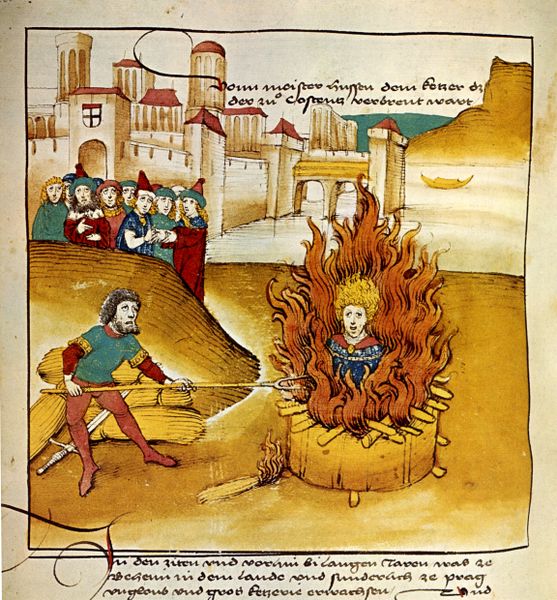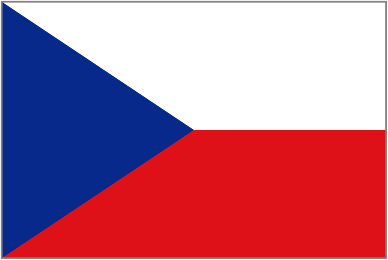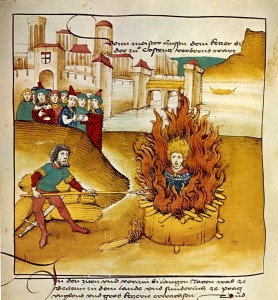March 28
The Czech Republic and Slovakia celebrate Teacher’s Day on March 28 to commemorate the 1592 birthday of:
- a. Frederick Scantron, inventor of the multiple-choice test.
- b. Dixon Ticonderoga, explorer and discoverer of the graphite mountain from which all pencils are hewn.
- c. Jan Amos Komensky, teacher, pastor and writer who was expelled from his own country to spend 42 years in exile.
- d. All of the above
If there’s anything I learned in junior high school, it’s “when in doubt, pick ‘C’.”

Today is the birthday of Jan Amos Komensky, better known by his Latin name Comenius.
M: Come, Boy, learn to be wise.
P: What doth this mean, to be wise?
M: To understand rightly, to do rightly, and to speak out rightly all that are necessary.
So begins Comenius’s Orbis Pictus, a “Nomenclature and Pictures of all the Chief Things that are in the World and of Men’s Employments therein.” The first illustrated encyclopedia for children.
“…it differed from all previous text-books, in being illustrated with pictures, on copper and wood, of the various topics discussed in it. This book was universally popular. In those portions of Germany where the schools had been broken up by the “Thirty years’ war,” mothers taught their children from its pages. Corrected and amended by later editors, it continued for nearly two hundred years, to be a text-book of the German schools.”
— History and Progress of Education, by Philobiblius, N.Y., 1860, p. 210.
The Orbis Pictus covered subjects ranging from anatomy:
“The Head is above the Feet. below. the fore part of the Neck (which ends at the Arm-holes,) is the Throat, the hinder part, the Crag, The Breast is before; the back behind; Women have in it two Dugs, with Nipples…”
“His Followers refrain themselves from Wine; are circumcised, have many Wives; build Chapels, from the Steeples whereof, they are called to Holy Service not by Bells but by a Priest, they wash themselves often, they deny the Holy Trinity: they honour Christ, not as the Son of God, but as a great Prophet, yet less than Mahomet; they call their Law the Alcoran.”
to “Monstrous and deformed people“…
“…are those which differ in the Body from the ordinary shape, as the huge Gyant (1), the little Dwarf (2), One with two Bodies (3), One with two Heads (4), and such like Monsters. Amongst these are reckoned, The jolt-headed (5), The great-nosed (6), The blubber-lipped (7), The blub-cheeked (8), The goggle-eyed (9), The wry-necked (10), The great-throated (11), The Crump-backed (12), The Crump-footed (13), The steeple-crowed (15), add to these The Bald-pated (14)”

It’s inspiring that someone with Komensky’s childhood should have penned the primer by which all others would be judged. His father died when he was 10, his mother a couple of years later, followed by his sisters. “Comenius was thus left an orphan at an early age, and his guardians appear to have robbed him of any small fortune that his father had bequeathed.” [The Great Didactic, Introduction by M.W. Keatinge]
Referring to the schools of his youth as “slaughter-houses” of the young, it wasn’t until he entered Herborn University at age 19 that things turned around. He studied at Heidelberg, traveled to Amsterdam and Hungary, taught at his old Latinschool in Moravia, and became a teacher-pastor in 1618, at the outbreak of the Thirty Years War.
Things did not go well for Komensky during the war. As a member of the Brethren of the Unity, a Protestant group based on the the theology of Jan Hus, Komensky and his circle were persecuted. Spanish soldiers burned his village and most of his possessions, including his library and his own writings. His wife and two children died during an epidemic. And he was forced into exile.
Komensky’s exile would last the rest of the his life. Bad for Komensky, but good for Western education.
“Surrounded by the chaos and destruction of war, Comenius believed that guns were no way to restore order—what the world really needed was a revolution in learning. He envisioned a liberal-arts education that would create citizens, rather than specialists, and proposed a new teaching system based on the novel principle of ‘school through play.'”
Emphasizing self-discipline as motivation for learning rather than physical punishment, he disseminated his progressive vision across the many lands he traveled while in exile, including Poland, England, Hungary, the Holy Roman Empire, the Netherlands, Sweden, and Lithuania. He never made it to the Americas, turning down an opportunity to head up a new university called Harvard, in favor of an offer by the Swedish Ambassador. And in the 1650’s he supported the Sweden’s takeover of Poland, a move that led once again to the burning and destruction of all his property, this time by angry Poles. Decades of his writings went up in smoke.
Still, his Janua, Orbis Pictus, and The Great Didactic were among many works that survived to form the basis of elementary education in Europe. He is credited with redefining the curriculum and learning environment used in Western education for hundreds of years.
The Comenius Medal for education, established in 1992, is one of UNESCO’s most prestigious awards. And though he was never able to return to his homeland, the people of the Czech Republic and Slovakia honor Komensky on his birthday by celebrating the noblest of professions: Teacher’s Day.

